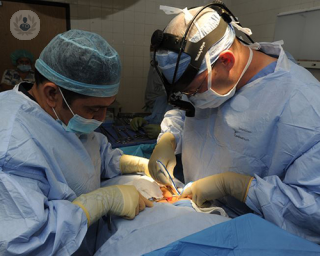Pelvic floor reconstructive surgery
Dr Alexander Bader - Obstetrics & gynaecology
Created on: 11-13-2012
Updated on: 01-17-2024
Edited by: Kate Forristal
What is pelvic floor reconstruction?
Pelvic floor reconstruction is a surgical procedure involving the repositioning of the internal organs of the female pelvis.

Why is it done?
The goal of pelvic floor reconstruction is to position pelvic structures in a manner that aims to correct prolapse symptoms, urinary and/or faecal incontinence, pelvic symptoms and preserving sexual function.
What does it involve?
Pelvic floor reconstruction is performed to improve positioning of the internal organs of the female pelvis: uterus, bladder and rectum. The procedure involves the suturing and tightening of the muscles and connective tissues affected, or elevation of organs, providing improved strength and support for the bowel and bladder.
There are different ways to perform it: vaginal route, abdominal route, laparoscopically (minimally invasive) or a combination of these.
How to prepare for it
It is important to consider all of the treatment options, as well as alternatives to surgery. There are pros and cons for each procedure and surgeons may have their own preferences and expertise. Before undergoing pelvic floor surgery, it is advisable to undergo a course of vaginal physiotherapy to strengthen the musculature of the area for the intervention. Some women also may choose vaginal support pessaries.
Post-operative care
If the surgery is performed through the vaginal or abdominal route, your surgeon will advise what type of post-operative care is necessary and how long you will need to rest. For many major procedures it is important that you avoid straining and heavy lifting for six weeks following surgery allowing the tissues to heal adequately. Instructions for common activities vary according to the procedure. It is important you take adequate pain relief and avoid constipation following surgery.

















